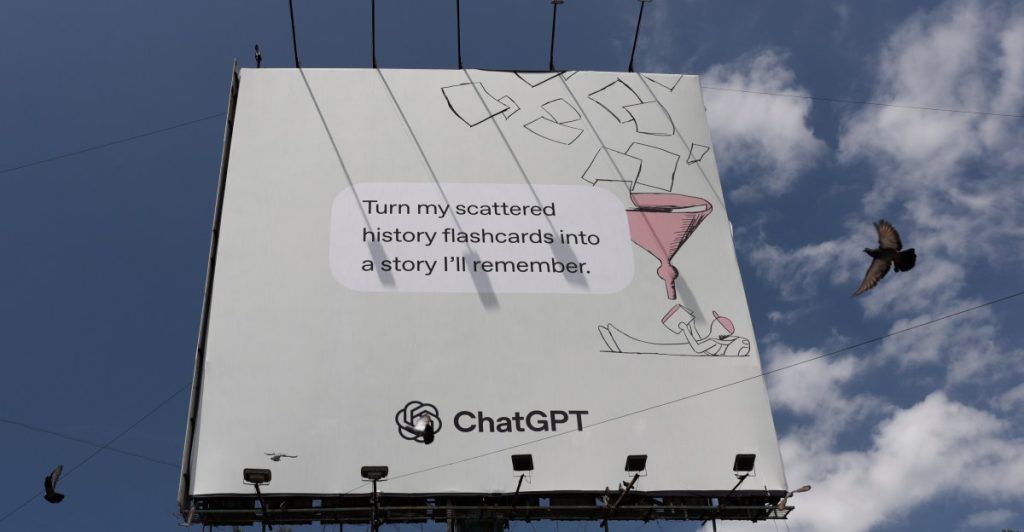It’s been a big couple of weeks for OpenAI. The world’s most valuable startup recently announced that ChatGPT will be more like an operating system, launched its first social networking app, and even spread rumors about the launch of a device designed to make us happy.
Of course, there are some complicated calculations along the way. These big product announcements came after chipmaker Nvidia, the world’s most valuable company, invested $100 billion in OpenAI to build more data centers, which OpenAI will fill with Nvidia chips. OpenAI then struck a deal with Nvidia rival AMD to build even more data centers and then fill them with AMD chips. Some analysts call these types of agreements “circular,” since one company is investing money in another company that returns part of it to them. Others call it “bubble-like behavior.”
All that said, OpenAI has signed IT deals worth $1 trillion this year alone. That staggering amount of money will help you do things like buy houses on Zillow without leaving ChatGPT, star in your own AI-generated sitcom, and carry an AI surveillance device in your pocket. $1 trillion is also a very silly sum considering that OpenAI has never made a profit and reportedly expects its losses to triple to $14 billion in 2026. And yet OpenAI’s valuation rose to $500 billion last week. (Disclosure: Vox Media is one of several publishers that have signed partnership agreements with OpenAI. Our reporting remains editorially independent.)
Mathematics like this are what have more and more people talking about the AI bubble and its imminent burst. On Wednesday, the Bank of England warned that the risk of a “sudden correction” in global markets is growing as valuations of top artificial intelligence companies rise. The same day, IMF Managing Director Kristalina Georgieva issued a similar warning, saying that valuations of technology companies “are heading toward levels we saw during the Internet optimism 25 years ago.” The Nasdaq index peaked on March 10, 2000, before imploding. The Nasdaq closed at all-time highs on October 6.
Bubble-like behavior, briefly explained
The idea that we are facing another technological bubble is not new. It’s been around for at least a decade, and people were wringing their hands over the AI hype even before ChatGPT shocked the world with its popularity. But the stakes are now higher than ever, as investment in the AI industry has expanded to all corners of the economy. The rise of AI is no longer just a Silicon Valley venture, as building the data centers needed to power applications like ChatGPT relies on the real estate, construction, and even air conditioning industries. Then there’s the chip industry, which ultimately relies on a single company in Taiwan to make the most advanced semiconductors for AI. Everyone seems to believe that the AI stake is too big to pass up.
The AI hype is so powerful that it is driving the rest of the economy. It’s also masking a lot of bad economic news in the United States, including inflation, stagnant growth and a dismal job market for young people, which the rise of AI likely contributed to. If the AI boom has effectively become an AI bubble and that bubble bursts, the ripple effects would affect everything.
It’s a terrifying thought. It also increasingly seems like a very real possibility. The circular agreement is just a red flag and it’s not just about OpenAI. Elon Musk’s xAI recently raised $20 billion, some of which came from Nvidia, to buy Nvidia chips.
Another red flag is the simple fact that we don’t know if these big bets on AI will pay off. AI companies expect demand for their products to continue growing, which is why they are investing so much in infrastructure to be able to meet that demand when it arrives. But everything is speculative. The hundreds of billions of dollars spent on data centers are reminiscent of the huge investment in Internet infrastructure in the 1990s. However, eventually the supply of fiber optic cables exceeded demand and the telecommunications industry collapsed.
However, the most prominent danger signs are ones you’ve probably experienced yourself: bad vibes. Americans are generally pessimistic about AI and have only become more concerned about the technology since the launch of ChatGPT. We really don’t know how AI will improve our lives. Sure, ChatGPT is popular (OpenAI says it has 700 million weekly active users), but it’s far from clear whether it will become our new operating system or the new gateway to the Internet. The ability of AI to increase productivity is also unproven so far. An MIT study published last month found that 95 percent of organizations surveyed saw no return on their AI initiatives.
It’s certainly possible that the rise of AI will remain just that, and we’ll all journey into the future with virtual assistants in our ears and data centers in our backyards. It’s also possible that bubble callers are right and that we are about to relive not only the dot-com crash of the early 2000s, but also the aftermath of Railroad Mania in the 1840s. In both periods, businesses collapsed and lives were ruined. However, the infrastructure survived. Victorian England ended up with a railway system and Silicon Valley got tubes to run the Internet. We eventually figured out how to make it all work.
A version of this story was also published in the User Friendly newsletter. Register here so you don’t miss the next one!


